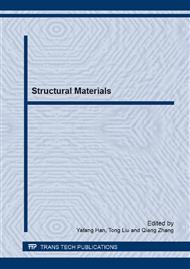p.504
p.511
p.519
p.525
p.531
p.538
p.543
p.549
p.554
Study on Fracture Morphologies of Nickel Based P/M Superalloy
Abstract:
Fracture morphology analysis is an important way to understand material fracture process, find the reason of fracture and improve its performance. Nickel based powder metallurgy (P/M) superalloy is an important material which is widely used in the modern aeronautic and astronautic industry. In order to determine the fracture characteristic morpholgies and mechanisms of the P/M superalloy fractured at different conditions, the fracture surfaces of the high temperature low cycle fatigue,high cycle fatigue, high-low cycle complex fatigue, tension and creep specimens from the P/M superalloy were studied by scanning electron microscopy and stereo-microscopy. The mechanisms and influencing factors of high temperature fatigue crack initiation and propagation were emphatically analyzed, and creep and tension fracture mechanisms of the P/M superalloy were also discussed. The application of the fracture surface analysis for the fracture failure analysis of the P/M superalloy turbine disk were introduced finally.
Info:
Periodical:
Pages:
531-537
Citation:
Online since:
April 2014
Authors:
Price:
Сopyright:
© 2014 Trans Tech Publications Ltd. All Rights Reserved
Share:
Citation:


